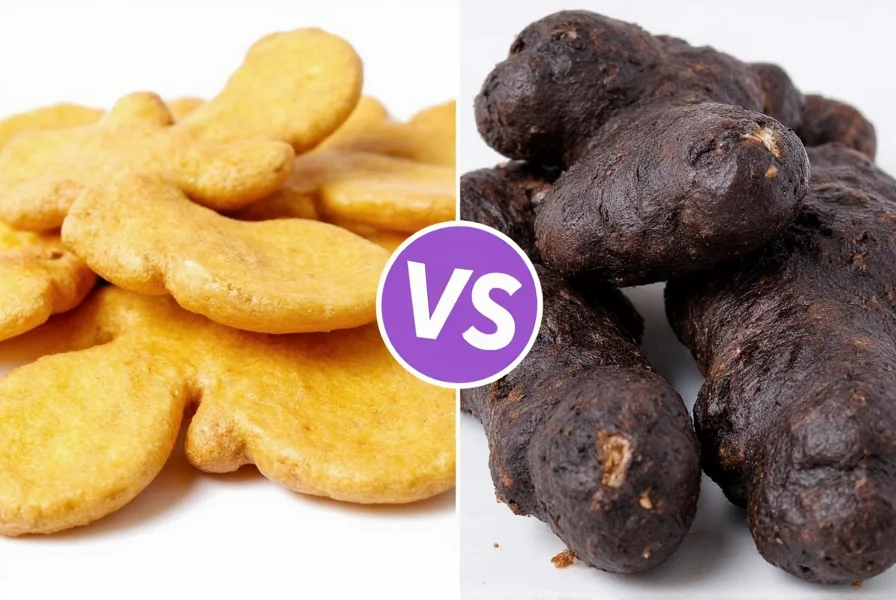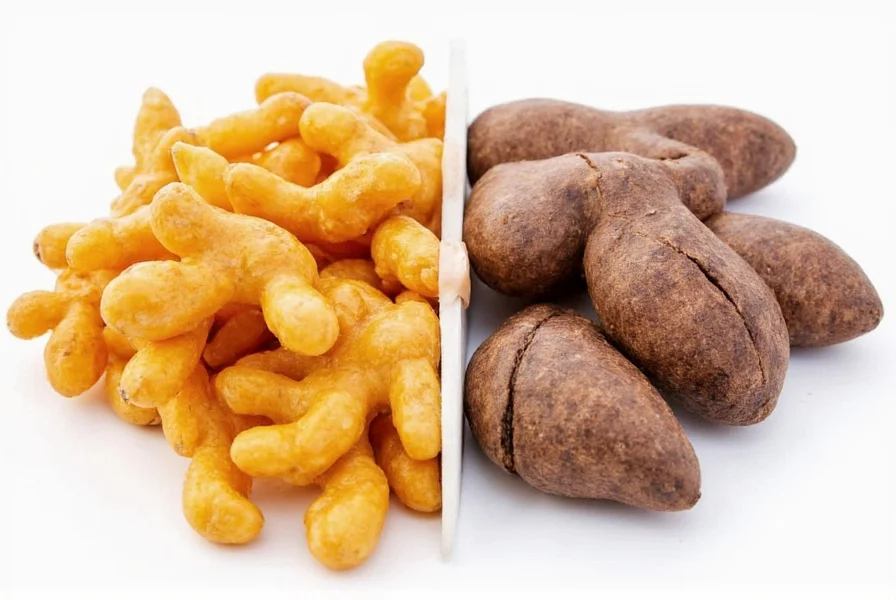Understanding the difference between ginger and black ginger is crucial for anyone interested in herbal medicine or culinary applications. Despite their similar names and botanical family connection, these plants have distinct characteristics that affect their uses, benefits, and availability.
Botanical Classification and Origins
Common ginger (Zingiber officinale) belongs to the Zingiberaceae family and has been used for over 5,000 years in traditional medicine systems across Asia. It grows as a reed-like plant reaching 2-3 feet tall with green leaves and yellow flowers. The edible part is the rhizome (underground stem) that's typically pale yellow inside.
In contrast, black ginger (Kaempferia parviflora, also called Thai ginseng or Krachai dam) is a smaller plant native specifically to Thailand's northeastern forests. It grows close to the ground with heart-shaped leaves and purple flowers. The rhizomes start pale but develop their characteristic dark coloration after harvesting and drying. This color change results from enzymatic oxidation, similar to how apples brown when exposed to air.
| Characteristic | Regular Ginger (Zingiber officinale) | Black Ginger (Kaempferia parviflora) |
|---|---|---|
| Native Region | South Asia (India, China) | Thailand (specifically Isan region) |
| Rhizome Color | Pale yellow to white | Dark purple-black when dried |
| Primary Compounds | Gingerols, shogaols | Polymethoxyflavones, especially 5,7-dimethoxyflavone |
| Traditional Use | Digestive aid, anti-nausea | Energy booster, sexual health, anti-fatigue |
| Plant Height | 2-3 feet | 6-12 inches |
Chemical Composition Comparison
The most significant difference between ginger black ginger lies in their chemical profiles. Regular ginger's primary bioactive compounds are gingerols and shogaols, which give it the characteristic spicy heat and many of its studied benefits for digestion and inflammation.
Black ginger contains minimal gingerols but is rich in rare polymethoxyflavones (PMFs), particularly 5,7-dimethoxyflavone and 5,7,4'-trimethoxyflavone. These compounds have generated scientific interest for their potential antioxidant, anti-inflammatory, and metabolic effects. A 2020 study published in Phytochemistry found black ginger extract demonstrated significantly higher antioxidant capacity than regular ginger in laboratory testing.

Traditional and Modern Applications
Traditional Thai medicine has used black ginger for centuries as a general health tonic, particularly for improving energy, circulation, and sexual function. Local communities in Thailand's rural areas still harvest wild black ginger for personal use, though overharvesting has made it increasingly rare in its natural habitat.
Regular ginger has broader global culinary applications, featuring prominently in Asian, Indian, and Caribbean cuisines. It's used fresh, dried, pickled, or powdered in both sweet and savory dishes. Black ginger's stronger, more complex flavor profile (described as earthy with hints of licorice) makes it less versatile in cooking but valuable in traditional medicinal preparations.
Modern research on black ginger black ginger benefits has focused on several promising areas:
- Metabolic health: Several animal studies suggest black ginger may support healthy blood sugar levels and lipid metabolism
- Exercise performance: Research indicates potential benefits for endurance and recovery
- Antioxidant properties: Higher levels of certain antioxidants compared to regular ginger varieties
It's important to note that while preliminary research shows promise, most studies on black ginger have been conducted in laboratory settings or on animals. Human clinical trials remain limited, so consumers should maintain realistic expectations about potential benefits of black ginger versus regular ginger.
Selecting and Using Both Varieties
When shopping for regular ginger, look for firm, smooth rhizomes with tight skin and minimal wrinkles. The best black ginger products come from reputable suppliers who can verify the botanical source, as mislabeling is common in the herbal supplement market.
Culinary uses differ significantly between these plants. Regular ginger works well grated into stir-fries, steeped for tea, or used in baking. Black ginger's stronger flavor means it's typically used in smaller quantities, often dried and powdered for medicinal teas or tinctures rather than fresh cooking.
For those interested in exploring the difference between ginger black ginger preparations, traditional Thai methods involve slicing the rhizomes thinly, sun-drying them until they turn dark, then brewing them as tea. Some producers now offer black ginger extracts standardized for specific polymethoxyflavone content, which provides more consistent dosing than raw rhizomes.
Safety Considerations
Both ginger varieties are generally recognized as safe when consumed in typical food amounts. However, those taking blood thinners should consult healthcare providers before consuming large amounts of either, as both may have mild anticoagulant properties.
Black ginger research suggests it may interact with certain medications metabolized by the CYP3A4 enzyme system. Pregnant women should avoid medicinal amounts of black ginger due to limited safety data, though culinary use of regular ginger for morning sickness remains well-supported.
Environmental and Sustainability Factors
Wild black ginger populations have declined significantly due to overharvesting and habitat loss. Sustainable cultivation efforts in Thailand now provide most commercial supply, though wildcrafted products still appear in markets. When purchasing black ginger products, look for certifications indicating sustainable harvesting practices to support conservation efforts.
Regular ginger faces fewer sustainability concerns as it's widely cultivated globally with established agricultural practices. However, organic options remain preferable to minimize pesticide exposure, especially since ginger rhizomes absorb compounds from the soil.

Conclusion
Understanding the distinction between ginger black ginger varieties helps consumers make informed choices based on their specific needs. While regular ginger remains the versatile kitchen staple with well-documented digestive benefits, black ginger offers unique compounds that may provide different health support when used appropriately. Both plants contribute valuable properties to traditional medicine systems, but their differences warrant careful consideration rather than treating them as interchangeable options.
Frequently Asked Questions
Is black ginger the same as regular ginger?
No, black ginger (Kaempferia parviflora) and regular ginger (Zingiber officinale) are different plant species within the same botanical family (Zingiberaceae). They have distinct chemical compositions, growth patterns, and traditional uses. Black ginger rhizomes turn dark purple-black when dried, while regular ginger remains pale yellow.
What makes black ginger different from regular ginger?
The primary difference lies in their chemical composition. Regular ginger contains gingerols as its main active compounds, while black ginger is rich in polymethoxyflavones (PMFs) like 5,7-dimethoxyflavone. Black ginger also grows closer to the ground as a smaller plant native specifically to Thailand, whereas regular ginger grows taller and originates from broader Southeast Asia.
Can I substitute black ginger for regular ginger in recipes?
Not directly. Black ginger has a stronger, more complex flavor profile (earthy with licorice notes) compared to regular ginger's familiar spicy warmth. In traditional Thai preparations, black ginger is typically dried and used in smaller quantities than fresh regular ginger. For culinary applications, they're not interchangeable without adjusting quantities and expectations for flavor.
Are there scientific studies supporting black ginger health benefits?
Yes, but research is still developing. Laboratory and animal studies suggest potential benefits for metabolic health, exercise performance, and antioxidant activity due to its unique polymethoxyflavones. However, human clinical trials remain limited compared to the extensive research on regular ginger. Most current evidence comes from preliminary studies rather than large-scale human trials.
Where can I find authentic black ginger products?
Authentic black ginger (Kaempferia parviflora) products are primarily available through specialty herbal suppliers with verifiable sourcing from Thailand. Look for products that specify the botanical name and preferably include standardization for polymethoxyflavone content. Be cautious of products simply labeled "black ginger" without botanical verification, as mislabeling is common in the herbal supplement market.











 浙公网安备
33010002000092号
浙公网安备
33010002000092号 浙B2-20120091-4
浙B2-20120091-4